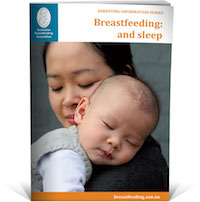Do We Have towake Up a 3months Baby to Feed
Newborns have tiny tummies and so need to feed frequently. For example, the Academy of Breastfeeding Medicine supplementation protocol (2017) reports that the average intakes of colostrum per feed by healthy, term breastfed is 2-10 mL on day 1, 5-15 mL on day 2, 15-30 mL on day 3 and 30-60 mL on day 4. Feeding frequently in the early days and weeks helps make sure you have a good milk supply.
Because breastmilk is easily digested, it is common for breastfed babies to feed 8–12 times in a 24-hour period. This usually means that your baby will breastfeed on average every 2–3 hours around the clock (day and night), with possibly one longer stretch (eg up to about 5 hours) between feeds somewhere in a 24-hour period. The length of time between feeds can vary greatly from baby to baby. The time between feeds is from the beginning of the last feed, not the end. Newborns also tend to have periods each day where they feed very frequently for a few hours (cluster feeds). Often these cluster feeding periods are followed by a longer stretch of sleep.
In most cases, healthy, thriving newborns will wake of their own accord for feeds and so get all the milk they need. Feeding your baby when he is showing early feeding cues can help him to feed better: see 'Feeding cues' article.
However, there are some reasons why a newborn may be extra sleepy. It may be necessary to wake the baby for feeds to ensure he gets the milk he needs. Some of the reasons are medical (eg jaundice, infection, heart problem), or perhaps medications for pain relief used during the birth are still affecting the baby. It is important to be guided by your medical adviser in these situations.
Feeding cues can be hard to pick in a sleepy baby so it is important to keep your baby close to you so you can learn.
There are many ways to tell if your baby is getting enough milk. See the article 'Low supply' for further information.
If you need to wake your baby for feeds, here are some tips:
- Change your baby's nappy.
- Breastfeed in a different position eg some mothers find the underarm helps keep the baby awake.
- Undress your baby down to his nappy and place him on your chest with as much skin-to-skin contact between you and him as possible.
- Give your baby a warm bath.
- Talk to him and make eye contact.
- Place your baby on your lap with his legs near your tummy and head on your knees. Gently support your baby, raise him into a sitting position, like doing a 'sit-up'. Repeat a few times.
- Gently massage his back in circular motions.
- Stroke his feet and hands.
Babies can breastfeed even when not fully awake. Once your baby is feeding, some of the ideas above can be used to keep him awake and feeding. In addition, it can help to switch breasts each time your baby slows in his sucking and starts to doze off. Take him off, burp him and wake him again to start on the other side. He can have each side more than once if he stays awake.
It can also be helpful to use breast compressions — ie squeeze your breast while he is sucking at the breast but is not swallowing milk. Breast compressions increase the flow of breastmilk which helps encourage the baby to suck and swallow, and thus get more milk. For more information on breast compressions see https://www.youtube.com/watch?v=4OeIwYDaLxQ
Even if you have a sleepy newborn who needs waking for feeds in the early weeks, this will change. Soon enough you will be able to relax and let your baby set his own individual feeding pattern.
 | Breastfeeding: and sleep booklet Breastfeeding and sleep helps you to work out your baby's natural sleep pattern and give you ideas for settling your baby. |
© Australian Breastfeeding Association June 2017
The information on this website does not replace advice from your health care providers.
Source: https://hartleyfromin.blogspot.com/2022/01/do-we-have-towake-up-3months-baby-to.html
0 Response to "Do We Have towake Up a 3months Baby to Feed"
Post a Comment